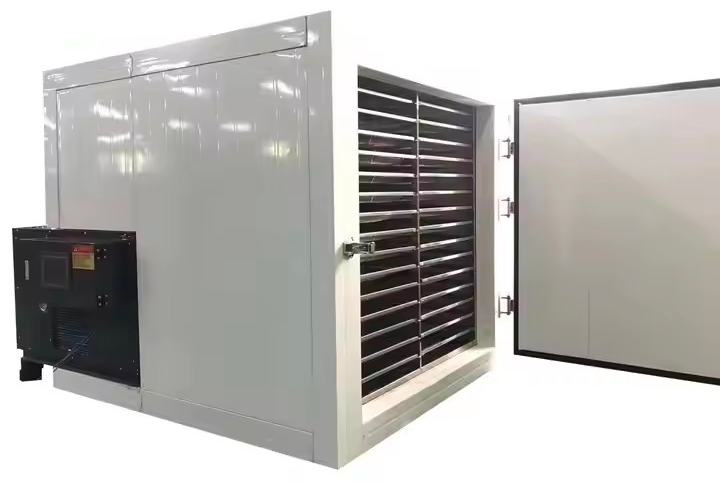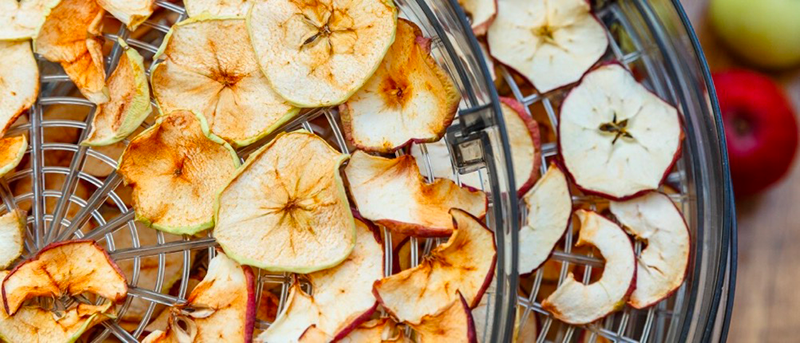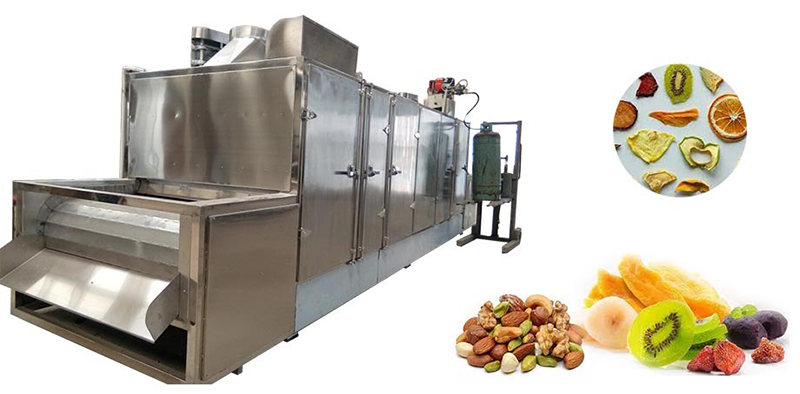
Content Menu
● Understanding Food Dehydration
>> Benefits of Using a Food Dehydrator
● Types of Food Dehydrators
● Key Features to Consider
● Top Food Dehydrators in Australia
>> 1. Cosori Food Dehydrator
>> 2. Excalibur 3926TCDB
>> 3. Magic Mill Pro
● How to Use a Food Dehydrator
● Tips for Successful Dehydration
>> Pre-Treatment Methods
>> Slicing Techniques
>> Testing Doneness
● Common Mistakes to Avoid
>> Overloading Trays
>> Ignoring Temperature Settings
>> Not Storing Properly
● Conclusion
● FAQ
>> 1. What is the best temperature for dehydrating fruits?
>> 2. How long does it take to dehydrate vegetables?
>> 3. Can I dehydrate meat in a regular food dehydrator?
>> 4. Is it worth buying a high-end dehydrator?
>> 5. How do I clean my food dehydrator?
● Citations:
When it comes to drying clothes efficiently, heat pump dryers have become a popular choice for many households in Australia. They are known for their energy efficiency and ability to dry clothes without releasing moisture into the surrounding air. However, this article will focus on food dehydrators, particularly for those interested in the best options available in Australia.
Food dehydrators are essential appliances for preserving food, enhancing flavors, and creating healthy snacks. In this comprehensive guide, we will explore various types of food dehydrators, their features, benefits, and how to choose the best one for your needs.

Understanding Food Dehydration
Food dehydration is a process that removes moisture from food to inhibit the growth of bacteria, yeasts, and molds. This method not only extends the shelf life of food but also concentrates flavors and nutrients. Dehydrated foods can be used in various recipes or enjoyed as snacks.
Benefits of Using a Food Dehydrator
- Preservation: Extends the shelf life of fruits, vegetables, herbs, and meats.
- Healthier Snacks: Create nutritious snacks without added preservatives or sugars.
- Cost-Effective: Save money by buying in bulk and dehydrating your own foods.
- Versatility: Suitable for a wide range of foods including fruits, vegetables, jerky, and even yogurt.
Types of Food Dehydrators
There are several types of food dehydrators available on the market:
- Stackable Tray Dehydrators: These feature multiple trays stacked on top of each other. They are compact and ideal for small kitchens.
- Shelf Dehydrators: These have shelves that slide out like an oven. They typically offer more space and can handle larger batches.
- Commercial Dehydrators: Designed for heavy-duty use, these units can process large quantities of food at once.
Key Features to Consider
When selecting a food dehydrator, consider the following features:
- Temperature Control: Adjustable temperature settings allow you to dehydrate different types of food effectively.
- Fan Placement: Rear-mounted fans provide even airflow, ensuring consistent drying across all trays.
- Timer Settings: Built-in timers help you manage drying times without constant monitoring.
- Ease of Cleaning: Look for models with removable trays that are dishwasher-safe for easy cleanup.
Top Food Dehydrators in Australia
Here's a look at some of the best food dehydrators available in Australia that offer excellent value for money:
1. Cosori Food Dehydrator
The Cosori Food Dehydrator stands out with its sleek design and user-friendly digital interface. It includes multiple trays and offers precise temperature control.
- Capacity: 6 trays
- Temperature Range: 95°F to 165°F
- Power Rating: 600 watts
- Features: Timer settings up to 48 hours and easy-to-clean trays.
2. Excalibur 3926TCDB
This model is known for its large capacity and efficient drying capabilities. It features a transparent door that allows you to monitor the drying process easily.
- Capacity: 9 trays
- Temperature Range: 105°F to 165°F
- Power Rating: 600 watts
- Features: Adjustable thermostat and timer settings.
3. Magic Mill Pro
The Magic Mill Pro excels in performance with its rear-mounted fan ensuring even drying without needing to rotate trays.
- Capacity: 7 trays
- Temperature Range: 95°F to 158°F
- Power Rating: 1000 watts
- Features: Digital interface with straightforward controls.

How to Use a Food Dehydrator
Using a food dehydrator is straightforward:
1. Preparation: Wash and slice fruits or vegetables evenly to ensure uniform drying.
2. Arranging on Trays: Place the prepared food on the dehydrator trays without overcrowding.
3. Setting Temperature and Time: Adjust the temperature according to the type of food being dried (e.g., fruits generally require lower temperatures than meats).
4. Monitoring Progress: Check periodically but avoid opening the dehydrator too often as it releases heat.
5. Storage: Once dried, store your food in airtight containers in a cool, dark place.
Tips for Successful Dehydration
To achieve the best results when using your food dehydrator, consider these additional tips:
Pre-Treatment Methods
Certain fruits benefit from pre-treatment before dehydration to enhance flavor and color retention:
- Blanching Vegetables: Briefly boiling vegetables before drying can preserve color and texture.
- Soaking Fruits: Soaking fruits like apples or pears in lemon juice or ascorbic acid solution can prevent browning.
Slicing Techniques
Uniform slicing is crucial for even drying:
- Use a mandoline slicer for consistent thickness.
- Aim for slices that are about 1/8 inch thick; thicker slices will take longer to dry.
Testing Doneness
To ensure your dried foods are ready:
- For fruits, they should be pliable but not sticky.
- For vegetables, they should be brittle or crisp when fully dried.
Common Mistakes to Avoid
Even seasoned users can make mistakes when using a food dehydrator. Here are some common pitfalls:
Overloading Trays
While it might be tempting to maximize space by loading trays heavily, overcrowding can lead to uneven drying. Always leave enough space between pieces for air circulation.
Ignoring Temperature Settings
Different foods require different temperatures; ignoring these guidelines can result in improperly dried items or loss of nutrients.
Not Storing Properly
After dehydration, storing foods incorrectly can lead to spoilage. Always use airtight containers and keep them in a cool environment away from light.
Conclusion
In conclusion, investing in a high-quality food dehydrator can greatly enhance your cooking experience by allowing you to preserve foods effectively while enjoying healthier snack options. The Cosori Food Dehydrator, Excalibur 3926TCDB, and Magic Mill Pro are among the top choices available in Australia that provide excellent value for money due to their features and performance. By understanding how to use these machines effectively and avoiding common mistakes, you can enjoy delicious homemade snacks all year round while maximizing your investment in kitchen appliances.

FAQ
1. What is the best temperature for dehydrating fruits?
- The ideal temperature for dehydrating fruits typically ranges from 125°F to 135°F (52°C to 57°C).
2. How long does it take to dehydrate vegetables?
- Depending on the type of vegetable and thickness of slices, dehydration can take anywhere from 4 to 12 hours.
3. Can I dehydrate meat in a regular food dehydrator?
- Yes, many food dehydrators are designed specifically for making jerky from meats as long as they reach adequate temperatures (typically around 160°F or 71°C).
4. Is it worth buying a high-end dehydrator?
- High-end dehydrators often come with better temperature control, more trays, and additional features that can enhance performance and convenience.
5. How do I clean my food dehydrator?
- Most models have removable trays that are dishwasher-safe; simply wash them after each use and wipe down the unit with a damp cloth.
Citations:
[1] https://www.bhg.com.au/lifestyle/cleaning/best-heat-pump-clothes-dryer/
[2] https://www.homebeautiful.com.au/laundry-ideas/best-heat-pump-clothes-dryers/
[3] https://www.thespruceeats.com/best-food-dehydrators-4077285
[4] https://www.ike.cn/video
[5] https://www.youtube.com/watch?v=rR2G5UO-5Ms
[6] https://www.youtube.com/watch?v=l4zqItYRrqY
[7] https://7news.com.au/best-picks/best-heat-pump-dryer-on-the-market-appliances-online-reigns-supreme-on-drying-in-small-apartments-c-15537893
[8] https://www.seriouseats.com/best-food-dehydrators-5216308
[9] https://www.youtube.com/watch?v=A5Nf2P7-nbU
[10] https://www.youtube.com/watch?v=mtDzdYoyeR8
[11] https://www.youtube.com/watch?v=bIXwQgg1N28
[12] https://www.istockphoto.com/photos/fruit-dryer












